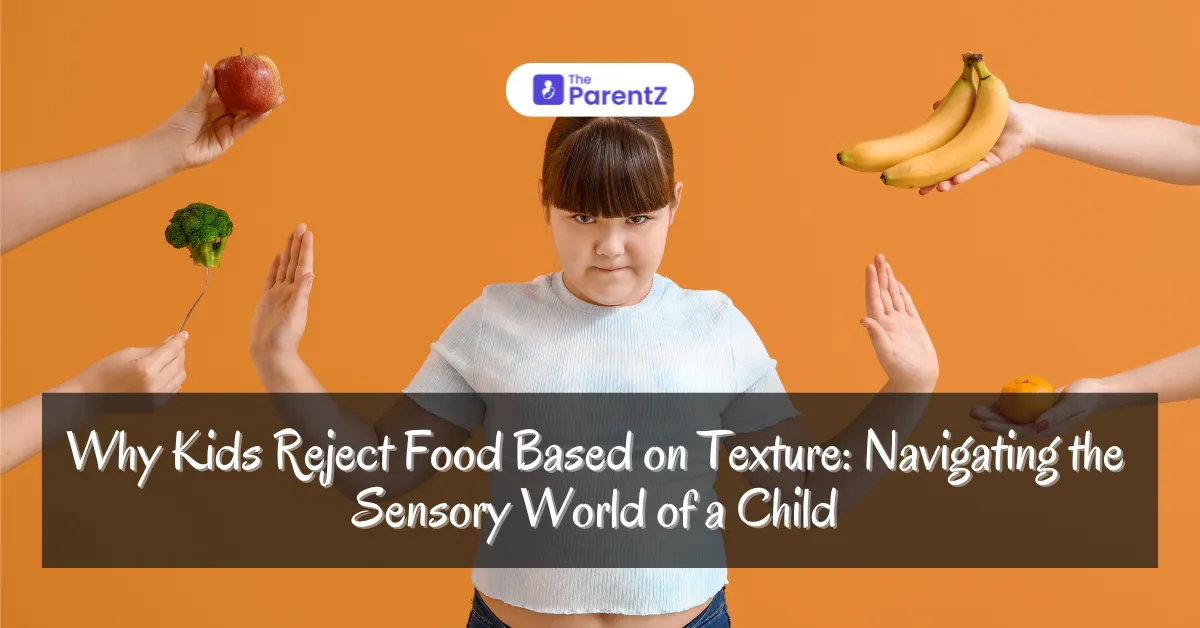As a parent, mealtime can feel like going through a minefield when your child suddenly refuses to eat seemingly perfectly good food. But what if we told you that this isn't just stubborn behavior? In this blog, we will explore the reasons behind these aversions, the implications for child development, and strategies that can help parents handle this situation.
The Sensory World of Food Texture
Imagine biting into something that makes your skin crawl. For some children, this is their everyday reality with food. Texture isn't just about taste – it's a full sensory experience that can trigger intense emotional and physical responses. Some kids experience food textures so dramatically that they go beyond simple pickiness and enter the domain of sensory processing challenges.
Why Texture Matters So Much
Our sense of touch is incredibly sophisticated. For children with food texture issues, certain sensations can feel overwhelming or even painful. A mushy banana might feel like slime, while a crunchy carrot could seem as abrasive as sandpaper. These aren't exaggerations – these are genuine sensory experiences that can cause real distress.
Common Texture Triggers
Parents often notice specific texture patterns that cause their children distress:
- Mushy or soft foods (puddings, mashed potatoes)
- Slimy textures (cooked spinach, certain sauces)
- Stringy or fibrous foods (celery, some meats)
- Grainy or lumpy textures (oatmeal with chunks)
Each child's sensory profile is unique. What sends one child into a meltdown might be perfectly acceptable to another.
Emotional Impact of Food Texture Challenges
Beyond the physical experience, food texture issues can create significant emotional strain. Children might feel:
- Embarrassed about their limited food choices
- Anxious during mealtimes
- Isolated from peers who eat more variety
- Frustrated with their own limitations
Parents, too, experience a complex emotional journey – feeling helpless, worried about nutrition, and sometimes misunderstood by others who see this as "just picky eating."
Strategies for Parents
- Validate Their Experience: The most crucial step is acknowledging that their sensory experience is real. Phrases like "I understand this feels uncomfortable for you" can make a world of difference.
- Gradual Exposure: Instead of forcing a child to try a new food all at once, introduce it slowly in small amounts alongside familiar foods. For instance, if a child dislikes the texture of mashed potatoes, parents might start by mixing a small amount into their favorite dish and gradually increasing the quantity over time.
- Experimenting with Preparation Methods: Changing how food is prepared can significantly alter its texture. For example, roasting vegetables instead of steaming them can create a different mouthfeel that some children may find more acceptable. Parents should experiment with various cooking techniques—such as grilling or sautéing—to discover what works best for their child.
- Creating Fun Food Experiences: Involving children in meal preparation can make them more open to trying new foods. Please encourage them to help wash, peel, or mix ingredients. Making the process fun and interactive helps reduce anxiety around new textures and fosters curiosity about different foods.
- Professional Guidance: If food texture issues persist and significantly impact a child's eating habits or overall well-being, seeking professional help from feeding therapists or occupational therapists may be beneficial. These professionals can provide tailored strategies and support through methods like food chaining—systematically introducing new textures in a supportive manner.
Conclusion
Food texture issues are challenging, but they're manageable. With patience, understanding, and the right support, children can gradually expand their food repertoire and develop a healthier relationship with eating.
Remember, every small victory matters. A lick, a touch, or even a curious look at a new food is progress. Your understanding and gentle approach can transform mealtime from a battlefield to a journey of discovery.








